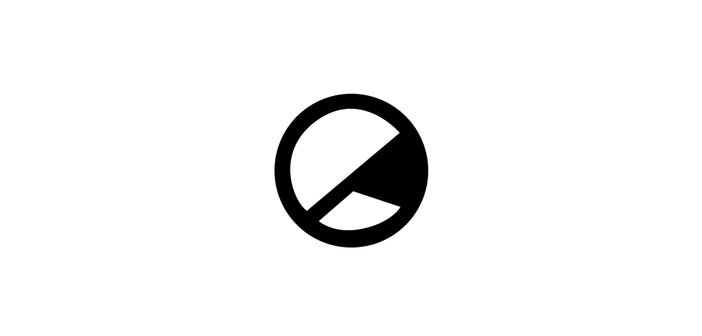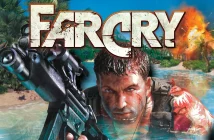Whilst playing Pokemon Sword and Shield is great fun, the games are ultimately unambitious and do not rise up to the expectations that come with being the first mainline generation on a home console.
-
6
Pokémon is the highest-grossing media franchise in the world. Seriously. Think of any other property in the world – Pokémon has it beat. But before the never-ending anime, before the adorable merchandise and before making it to the big screen with Detective Pikachu, Pokémon is all about the main-line role-playing games.
Enter the newest games, Pokémon Sword and Shield which kick-start Generation 8 and which follow in the tradition established with the very first games, Pokémon Red, Blue and Green (yes, Green exists – but was a Japanese exclusive). What makes, or should make, these new entries special is that it is the first time that the mainline titles are available on a home console (even though some previous titles could technically be played on earlier Nintendo home consoles), bringing with them, then, a great number of expectations. Moreover, it does not help that another important Nintendo franchise, The Legend of Zelda, debuted on the Switch with the excellent Breath of the Wild – which to many is a reinvention of a franchise that was held back by the very same game conventions that ended up defining it and that, over numerous iterations, became trite. All of this is to say that GAME FREAK had a heavyweight on its shoulders and that, for many fans, Pokémon Sword and Shield had to be this title that revolutionised a franchise that is notorious for being iterative and which has, in turn, grown rather stale.
Do Pokémon Sword and Shield rise up to these hefty expectations? Not even close. Are Pokémon Sword and Shield, in spite of themselves, the dream Pokémon games? Definitively not. Are they incredibly successful? Frustratingly so – Pokémon Sword and Shield swiftly becoming the fastest-selling Nintendo Switch titles to date. Is GAME FREAK going to, with future titles, innovate instead of iterate? Not as long as these games are going to do so well. Pokémon fans, as such, seem to be doomed to be playing more or less the same game they’ve been playing since 1996. This is why it’s safe to conclude that Pokémon Sword and Shield are bad video games. But here’s the kicker: I love them.
I love PokémonSword and Shield despite them being so frustratingly unambitious and bland. I love them because there’s something inherently fun and exciting about the entire Pokémon formula: there is nothing quite like choosing a starter in a new Pokémon game and there is no other RPG out there has so many cute, cool, adorable and what-have-you party members to recruit. I love them despite the main story boring me to tears, despite the ugly Dreamcast-quality trees (note: the Dreamcast is fantastic) and despite any other negatives. Almost nothing in video games makes me smile more than my Meowth (nicknamed Cash Money) Dynamaxing into one of the best Pokémon designs ever.
And, yes, to explain, Dynamaxing is Pokémon Sword and Shield’s premier gimmick, which is essentially a feature that allow your Pokémon to become larger versions of themselves which change their moves and is a technique meant to bring more strategy to Trainer Battles. However, as per usual Pokémon, the battles are ridiculously easy and so Dynamaxing is never particularly exciting after seeing it for the first time. It does, indeed, spruce up online and post-game battles, but only insomuch as Mega Evolutions and Z-Moves did before them: which is to say that most people will brush it off and that Dynamaxing will be replaced in the inevitable next-generation with something equally uninteresting.
More interesting is the Wild Area is the other gimmick that Pokémon Sword and Shield relies upon: an open space á la Breath of the Wild where Trainers can encounter even high-level Pokémon. This breaks the linearity of previous Pokémon games and allows the player the freedom that most fans have been clamouring for. The developers have always tried to make routes and game progression more interesting, but this is perhaps the best idea they’ve had yet. However, the execution of this idea is not great and it never really comes to fruition. After the initial rush, the Wild Area reveals itself to be shallow and players don’t get to interact much with it as part of the story. Similarly, while it may seem fun to interact with other players and receive items from them and even band together in Max Raid Battles, where four Trainers (either online or AI) try to take down a Dynamaxed Pokémon, these interactions are not that fun. It is rewarding, yes, to win a Max Raid Battle and then catch an over-leveled barboach or speak to another player and get an ingredient for use when making curry, but it is, more often than not, not even worth the time or the effort.
Speaking of curry, Pokémon Sword and Shield allow you to set camp with your Pokémon and interact with them. In Pokémon Camps, players can cook curry, which, depending on the ingredients used and player performance in a bare-bones mini-game, can restore the pokémon’s health points, alleviate any status effects (such as poison or paralysis) and make them friendlier. Players can also play and ‘talk’ with the pokémon which, is an enticing idea, but, like the curry and, frankly, like most things in this title – the execution is simply not up to par. I would love to interact with my pokémon more, but the game never really allows me to – the mechanics are simple and the models and animations are stiff. And, of course, mention of pokémon models and animations subsequently leads to a larger discussion that addresses the main controversy going into the release of these two titles.
Pokémon has, since the very first games, been backwards compatible to a fault. And whilst the fact that you can actually transfer all the Pokémon you caught in all the previous games (if you own and finish all of them) into Pokémon Sword and Shield(at least when Pokémon Home releases in 2020) is nothing short of amazing, this has also been one of the major reasons that GAME FREAK has invoked for why the franchise is always catching-up to its contemporaries. Having to cater to over 800 Pokémon (number which increases every time a major new game comes out) spanning 8 Generations (most with new mechanics that also need to be incorporated with bringing these Pokémon back – like Mega Evolution, for example) is incredibly demanding, especially for GAME FREAK, which, despite The Pokémon Company raking up billions every year, somehow does not have enough resources. Because of this, GAME FREAK did something unprecedented with Pokémon Sword and Shield and have decided to reduce the number of Pokémon that are available in or transferable to the newest games. And whilst this is disappointing, especially to those who lose favourites in the process (RIP some of my favourites – Chikorita, Krookodile, Heracross, Incineroar, Mismagius…) this has always been an inevitability. Pokémon has many Pokémon – and with Pokémon Sword and Shield, “many” became too many. The reason this is even more disappointing, and perhaps why so many fans are frustrated and/or upset, is that GAME FREAK stipulated that they want the animations and the models to look better going into this generation and that, ultimately, quality reigns over quantity. The problem is that, as fans were fast to point out, all of the older models are reused from previous games: there is no marked improvement, other than resolution, to how Pikachu looks or is animated.
However, whereas this is a tough pill to swallow, it still does not stop me from loving these games. Yes, it is unfortunate that Bulbasaur is not in Pokémon Sword and Shield, but there’s literally hundreds of other pokémon to love, including most of the new ones. And yes, the individual models and animations are not as polished as they should be, but, on the other hand, nothing beats seeing a Cramorant spit out a Pikachu in full force when it faints. In any other video game, this controversy should be a deal-breaker but, Pokémon gets away with it because of, well, its Pokémon. These games have always been about the Pokémon – party members that you choose to recruit. There is nothing more exciting about a new Pokémon game that finding out what crazy, stupid yet somehow endearing Pokémon is waiting in the tall grass for a player to catch it and then to subsequently name it Nutella or Adam Sandler. Pokémon Sword and Shield capture what is essential about Pokémon, which is the ridiculous amount of choices to make. Pokémon makes the player special by allowing them to make wild Pokémon their own. It also helps, then, that despite lackluster animations and models, Pokémon Sword and Shield have some of the best designs yet introduced to the series.
In fact, I like the new designs so much that it was one of the rare instances where almost everyone from my team is a new Pokémon or a new form. This helped make what I love about Pokémon even better as I found myself having a blast assembling my squad and seeing everyone evolve into wildly different forms. This cemented the idea that as flawed as this loop is, there is constantly something rewarding about it. Embarking on a new journey in Kanto or Alola and now in Galar, is always exciting not because of the Gym Challenges (which never amount to anything) or the vistas (which are never, despite being artfully designed, truly impressive) but because of the party you take along for the ride: the strength of Pokémon lies in the friends you make along the way.
The aforementioned new region, Galar, is modeled after the United Kingdom, so then close to home this time around. But, whereas it’s very exciting to recognise vistas and to understand the atmosphere that the developers were going for, I only wish that you would have more to do in this region. The places you end up visiting are gorgeous, but, despite appearances, they are quite bland. Not even the Gyms, now modeled after football stadiums, offer a spectacle. Ultimately, even though they definitely try to, the game never quite manages to make Galar pop or to make it feel like a lived-in region. Not even the soundtrack, which has some stand-out tracks, makes this place feel truly alive or exciting.
The story does not bring the region to life either as it is paper-thin and most. Not even the legendary encounters are particularly interesting, the story falling flat even in its climax. The characters, on the other hand, despite being potentially interesting, never really get the spotlight they deserve. Nessa, Marnie and even Poké Guy are all fun to be around, but the game never really goes in-depth enough with them. Team Yell, as well, is probably the least unimportant and uninteresting Rival Team in franchise history, despite the concept behind them being interesting to boot.
So yes, the game does have a bad story (not to mean that any Pokémon game, for that matter, as a particularly good one) but, as aforementioned, these games are all about weaving your own stories. I loved wreaking havoc with my hand-picked team and I love the narrative that ensued. And herein lies the strength of the entire franchise: no other video game can make me care about stupid animal-like creatures except for Pokémon. And no one else makes me care about being the very best like Pokémon does. By the end of the game, the story of the game became my story: I loved becoming Champion Ed. By the end of the game, I cared more about my Meowth, Cash Money, than I did about God of War’s Kratos or The Last of Us‘s Ellie, both of whom I love in their own right. And yet, Cash Money and Pokémon reign supreme for me – and they probably always will.
Perhaps the best thing that Pokémon Sword and Shield have going for them, in terms of how they stack up to the rest of the franchise, is how fun they are to play. Never in any mainline title, perhaps except for Generation 1, which remains the gold standard for a Pokémon RPG, has it ever been easier and more convenient to play the game however you wanted to. However, this too comes with a caveat: Pokémon Sword and Shield are streamlined almost to a fault and, in turn, lose some of the magic. Pokémon Centres, for example, are more useless than ever, since you can now access Pokémon from almost anywhere in the game. This being said, playing Pokémon is still much more convenient than it ever was and, for it, Pokémon Sword and Shield are probably the best Pokémon RPGs you can play today.
To reiterate, Pokémon Sword and Shield are bad videogames, even if I love them to bits. They encapsulate everything I love and love to hate about Pokémon. If you’ve ever played Pokémon before but have skipped the last ones, Sword and Shield are probably not the ones that are going to make you want to return to the franchise. Similarly, if you’ve always been on the fence about Pokémon or if the games were never appealing, this is probably not the Pokémon game to change your mind. However, in spite of this, there is fun to have with Sword and Shield – you just have to look harder for it.
Pokémon Sword and Shield prove yet again that Pokémon is for video games what Tikka Masala is for curry: always good enough to keep wanting more but never how good you think it can truly be.
Pokémon Sword and Shield are available now for Nintendo Switch. Watch the trailer below:




